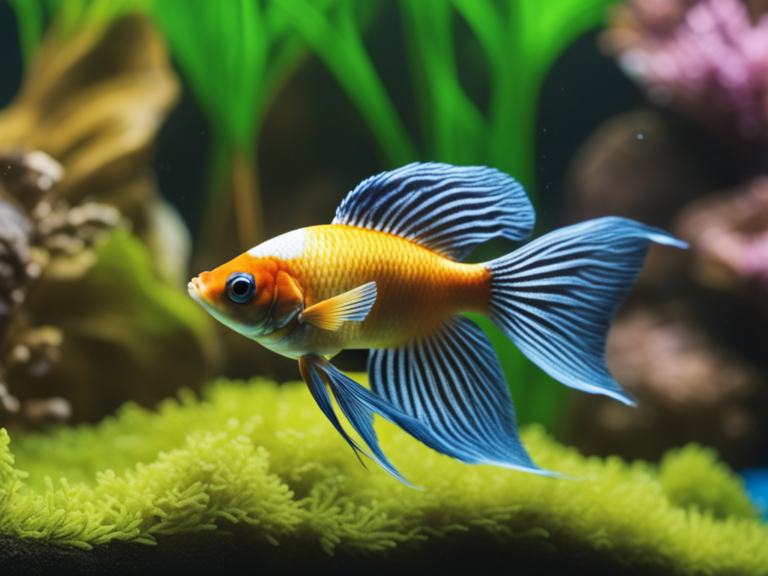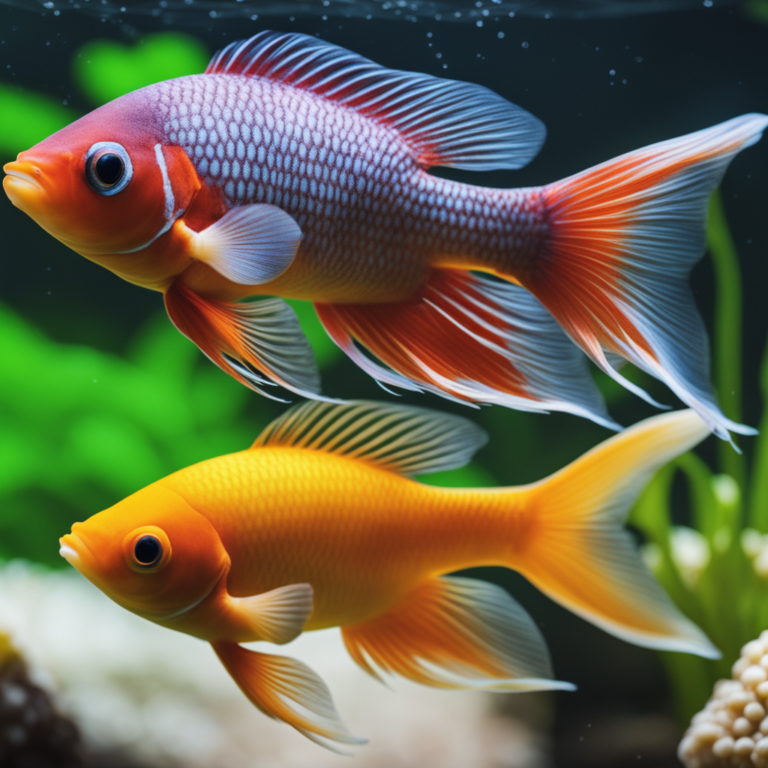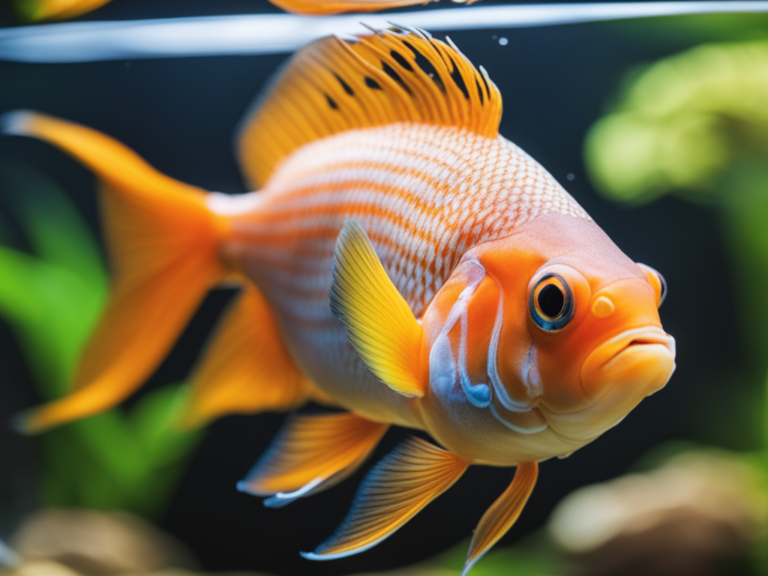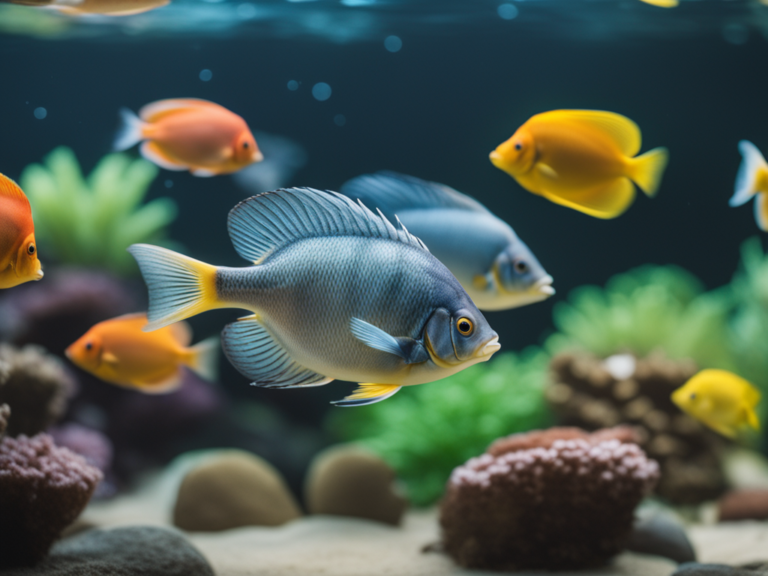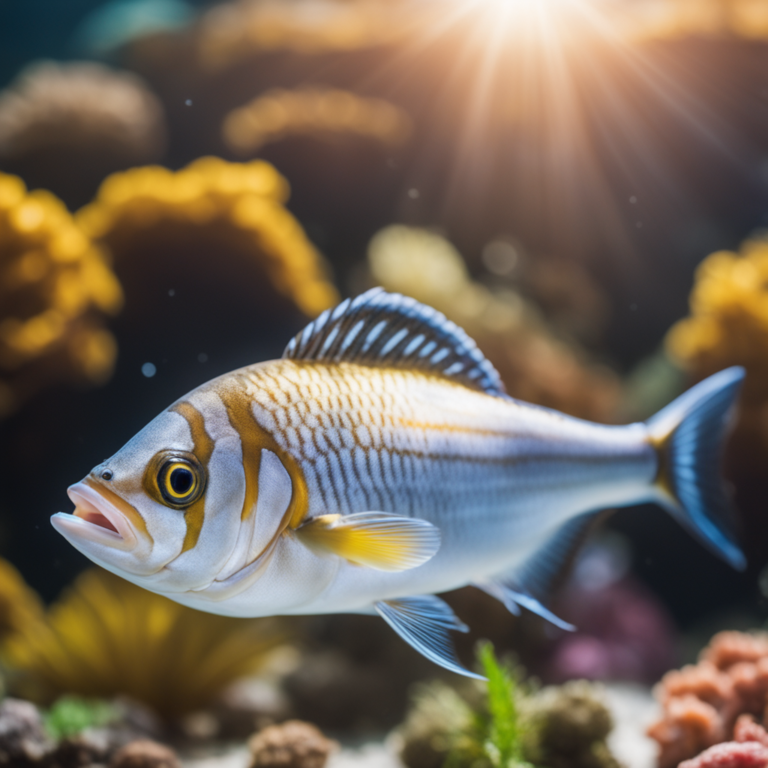7 Amazing Low Maintenance Tropical Fish Breeds

Low Maintenance Tropical Fish Breeds: Are you tired of spending hours on fish tank maintenance? Look no further! Discover the world of low-maintenance tropical fish breeds. These aquatic companions will bring vibrant colors and serenity to your home without demanding constant attention. Symbolizing tranquility and beauty, these fish breeds are perfect for busy individuals who still want to enjoy the wonders of an underwater paradise.
From the graceful betta fish to the lively tetras, there is a low-maintenance tropical fish breed that will suit your lifestyle and add a touch of nature to your space. With their easy-care requirements and captivating presence, these fish will make a delightful addition to your home or office. Dive into the world of low-maintenance tropical fish breeds and experience the joy of hassle-free fishkeeping.
Guppies
If you’re looking for a low-maintenance tropical fish breed, guppies are a great choice. Guppies are known for their vibrant colors and fascinating breeding habits. These small fish are native to South America and are popular among both beginner and experienced aquarists.
Guppies are renowned for their wide range of color variations. From bright oranges and yellows to deep blues and greens, guppies come in a plethora of shades. This striking variety is a result of selective breeding, where breeders have deliberately chosen guppies with desirable colors to create new and unique combinations. The wide array of colors makes guppies a visually appealing addition to any aquarium.
In addition to their stunning colors, guppies also have fascinating breeding habits. They are livebearers, which means that instead of laying eggs, females give birth to live fry. Guppy breeding is a relatively straightforward process, making it ideal for beginners. Female guppies can store sperm from a single mating and give birth to multiple broods without further mating. This ability to produce multiple generations from a single mating is known as super-fecundity.
Guppies are also known for their high breeding rate. They reach sexual maturity at just a few months old and can reproduce every 4 to 6 weeks. This rapid breeding cycle can lead to a population explosion if not carefully managed. Therefore, it is important to monitor the number of guppies in your tank and provide sufficient space and resources to accommodate their growing numbers.
Betta Fish
When considering low-maintenance tropical fish breeds, another option to explore is the betta fish. Betta fish, also known as Siamese fighting fish, are beautiful and vibrant creatures that can be a great addition to your home aquarium. Here are some betta fish care tips and betta fish tank setup guidelines to ensure your betta fish thrives in its environment:
- Betta fish care tips:
- Keep your betta fish in a tank with a minimum capacity of 5 gallons. This will provide enough space for them to swim and explore.
- Maintain the water temperature between 76-82°F (24-28°C) using a heater. Betta fish are tropical fish and require warm water to thrive.
- Feed your betta fish a balanced diet of high-quality betta fish pellets or flakes. Overfeeding can lead to obesity, so it’s important to feed them in small portions 2-3 times a day.
- Betta fish tank setup:
- Use a tank with a lid or cover to prevent your betta fish from jumping out. Betta fish are known to be excellent jumpers.
- Decorate the tank with live or silk plants. These provide hiding spots for your betta fish and help create a natural environment.
- Install a gentle filter to maintain water quality. Betta fish prefer calm water, so choose a filter with adjustable flow settings.
Platies
To properly care for platies, you need to consider their unique needs and create an ideal habitat. Platies are small, colorful, and easy to care for tropical fish. They have a peaceful temperament and are great for beginners. Platies are known for their vibrant colors and come in various shades of red, orange, yellow, and blue. They are also known for their breeding habits, as they are livebearers.
When it comes to tank setup for platies, it is important to provide them with enough space to swim freely. A tank size of at least 10 gallons is recommended for a small group of platies. Ensure that the tank has a secure lid to prevent them from jumping out. Platies prefer a well-maintained tank with a temperature range between 72 to 82 degrees Fahrenheit. A pH level of 7.0 to 8.2 is suitable for their habitat.
To replicate their natural environment, it is advisable to include live plants and hiding spots in the tank. This will give the platies a sense of security and also provide them with places to rest. Additionally, having a gravel substrate and a gentle filtration system will help maintain water quality.
Breeding platies is relatively easy, as they are livebearers. The females give birth to fully formed fry instead of laying eggs. To encourage breeding, it is recommended to have a ratio of one male to two or three females. Provide plenty of hiding spots for the fry to ensure their survival. The fry can be fed crushed flakes or specially formulated fry food.
Swordtails
Swordtails are a popular choice for low-maintenance tropical fish breeds due to their striking appearance and ease of care. These fish have a long, sword-like extension on their tails, which adds to their visual appeal. Here are three key factors to consider when caring for swordtails:
- Breeding habits: Swordtails are livebearers, which means they give birth to live young instead of laying eggs. This makes them relatively easy to breed compared to other fish species. Male swordtails are known for their elaborate courtship displays, where they will flaunt their colorful tails to attract females. Once the female is pregnant, she will carry the fertilized eggs in her body until they hatch. It is important to provide plenty of hiding places or plants in the tank for the newborn fry to seek shelter.
- Tank size requirements: Swordtails are active swimmers and need ample space to move around. A minimum tank size of 20 gallons is recommended for a pair of swordtails. If you plan on keeping a larger group, you will need a larger tank to accommodate their needs. Additionally, it is crucial to maintain good water quality by regularly cleaning the tank and performing water changes.
- Compatibility with other fish: Swordtails are generally peaceful fish and can be kept with other community fish species. However, it is important to avoid keeping them with aggressive or fin-nipping fish, as their long tails can be tempting targets. Good tankmates for swordtails include tetras, mollies, and guppies.
Mollies
If you are interested in adding another low-maintenance tropical fish breed to your tank, consider mollies as a great option. Mollies are a popular choice among hobbyists due to their vibrant colors, adaptability, and ease of care. When setting up a tank for mollies, it is important to create an environment that mimics their natural habitat.
For tank setup, provide a spacious tank with a minimum size of 10 gallons for a small school of mollies. They are active swimmers, so providing enough space will allow them to move freely. Additionally, include hiding spots such as rocks, caves, or plants to provide them with a sense of security. Mollies are known for their love of vegetation, so adding live plants to the tank not only enhances their natural habitat but also aids in maintaining water quality.
Ideal water conditions for mollies include a temperature range of 75-82°F (24-28°C) and a pH level between 7.5 and 8.5. Mollies are a hardy species and can tolerate a wide range of water conditions, but maintaining optimal conditions will ensure their overall health and well-being. It is also important to maintain good water quality by performing regular water changes and monitoring ammonia, nitrite, and nitrate levels.
Tetras
One recommended breed for low-maintenance tropical fish tanks is the neon tetra. These small and vibrant fish not only add a pop of color to your aquarium but also require minimal care and attention. To ensure a successful tetra tank setup, here are some key factors to consider:
- Tank size: Neon tetras are schooling fish, so it’s crucial to provide them with enough space to swim and interact. A 10-gallon tank is suitable for a small group of tetras, but if you plan on having more, consider a larger tank to accommodate their needs.
- Water parameters: Tetras thrive in soft, slightly acidic water conditions. Maintain a pH level between 6.5 and 7.0 and a temperature of 72-78°F (22-26°C). Regular water testing and partial water changes are essential to ensure a healthy environment for your tetras.
- Tank mates: Neon tetras are peaceful fish, but they feel more secure when kept with their own kind. Consider adding a group of 6-8 tetras to create a lively and harmonious community. Avoid aggressive or large fish that may intimidate or prey on the tetras.
When it comes to tetra-feeding requirements, they are relatively easy to satisfy. Neon tetras are omnivorous and will readily consume a variety of foods. Provide them with a balanced diet that includes high-quality flakes, pellets, and occasional treats like frozen or live foods. Feed them small amounts two to three times a day to prevent overfeeding and maintain good water quality.
Danios
To maintain a low-maintenance tropical fish tank, consider adding danios as they are a hardy breed that requires minimal care. Danios, scientifically known as Danio rerio, are small freshwater fish native to the rivers of South Asia. They are popular among fishkeepers due to their vibrant colors, active nature, and easy-to-maintain characteristics.
When it comes to breeding habits, danios are known for being prolific breeders. They are egg layers and can lay hundreds of eggs during the breeding process. To encourage breeding, it is essential to provide them with the right tank setup. A well-planted tank with plenty of hiding spots and a smooth substrate is ideal for Danios. It is also crucial to maintain a stable water temperature between 72-78°F (22-26°C) and a pH level of 6.5-7.5. Additionally, regular water changes and a balanced diet consisting of high-quality flakes, pellets, and occasional live or frozen foods will help promote breeding behavior.
In terms of tank setup, danios are relatively undemanding. They prefer a spacious tank with plenty of swimming room. A tank size of at least 10 gallons is suitable for a small group of danios. It is essential to provide them with a well-filtered environment to maintain good water quality. Danios are known to be jumpers, so it is crucial to have a secure lid to prevent any accidents.
Rasboras
To further diversify your low-maintenance tropical fish tank, consider adding rasboras, an active breed that will add color and movement to your aquarium. Rasboras are small, peaceful fish that are perfect for beginners and experienced fishkeepers alike. They are known for their vibrant colors, shoaling behavior, and easy care requirements.
Here are three key points to consider when adding rasboras to your tank:
- Breeding habits: Rasboras are egg-scattering breeders, meaning they release their eggs into the water where they are left to hatch on their own. To encourage breeding, provide your rasboras with plenty of hiding places, such as plants or caves. You can also simulate the rainy season by lowering the water level slightly and increasing the temperature.
- Ideal tank conditions: Rasboras thrive in a well-maintained tropical aquarium. They prefer a pH level between 6.0 and 7.5 and a temperature range of 75-80°F (24-27°C). A tank size of at least 10 gallons is recommended, although larger tanks are ideal for keeping a larger school of rasboras. Ensure the tank is well-filtered and provides plenty of plants and hiding spots to mimic their natural habitat.
- Tankmates: Rasboras are peaceful fish that get along well with other peaceful species. They are best kept in groups of at least 6-8 individuals to promote shoaling behavior. Good tankmates for rasboras include other small, peaceful fish like tetras, guppies, and corydoras catfish. Avoid keeping them with aggressive or larger fish that may intimidate or prey on them.
Low Maintenance Tropical Fish Breeds Frequently Asked Questions
Are Guppies Suitable for Beginners in Fishkeeping?
Guppies are perfect for beginners in fishkeeping. They offer numerous benefits, such as their vibrant colors and easy care requirements. Their hardiness and adaptability make them ideal for those new to the hobby.
How Often Should Betta Fish Be Fed?
You should feed betta fish once or twice a day, giving them only as much food as they can eat in 2 minutes. It’s important to create a stress-free environment for betta fish by properly cleaning their tank and providing a suitable habitat.
Do Platies Require a Heater in Their Tank?
Platies are tropical fish and require a heater in their tank to maintain a consistent temperature. The ideal temperature range for platies is between 72-82°F. Make sure to provide a suitable tank size for them.
What Is the Average Lifespan of Swordtail Fish?
The average lifespan of swordtail fish is around 3-5 years. Breeding swordtail fish requires a well-maintained tank with proper water conditions, ample hiding spots, and a balanced diet to ensure the health and longevity of the offspring.
Can Mollies and Tetras Be Kept Together in the Same Aquarium?
Mollies and tetras can be kept together in the same aquarium. This compatibility benefits both species as they provide a vibrant and diverse display. Regular water changes and a balanced diet will ensure their health and well-being.
Conclusion
In conclusion, these low-maintenance tropical fish breeds offer an excellent choice for those seeking a hassle-free aquarium experience. Guppies, Betta Fish, Platies, Swordtails, Mollies, Tetras, Danios, and Rasboras require minimal care and are suitable for beginners. With their vibrant colors and playful nature, these fish species add beauty to any tank while requiring little effort to maintain. Whether you are a busy professional or a first-time fish owner, these breeds are sure to provide you with many enjoyable moments in your aquatic hobby.



